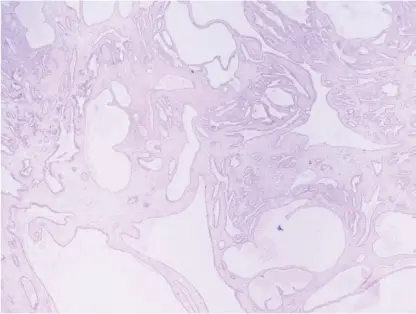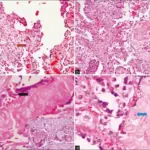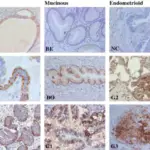Cystadenofibroma of the Ovary is a relatively rare benign ovarian tumor that contains both epithelial and fibrous stromal components which often appears complex; cystic- to solid-appearing masses and it often resembles a malignant tumor.
What is the Pathology of Cystadenofibroma of the Ovary?
The pathology of cystadenofibroma of the ovary is:
-Etiology: The cause of cystadenofibroma of the ovary is unknown.
-Genes involved: CALB2 gene.
-Pathogenesis: The sequence of events that lead to cystadenofibroma of the ovary is unknown.
-Morphology: The morphology associated with cystadenofibroma of the ovary shows Varied solid areas with knobby papillae to firm confluent areas.
-Histology: The histology associated with cystadenofibroma of the ovary shows fibrous stroma.
How does Cystadenofibroma of the Ovary Present?
Patients with cystadenofibroma of the ovary typically females of adult reproductive age. The symptoms, features, and clinical findings associated with cystadenofibroma of the ovary include: ovarian mass, lower discomfort, nausea and poor appetite.
How is Cystadenofibroma of the Ovary Diagnosed?
Cystadenofibroma of the ovary is diagnosed by blood tests for CA125, pelvic ultrasound, CT scan, MRI.
How is Cystadenofibroma of the Ovary Treated?
Cystadenofibroma of the ovary is treated by: Surgery cystectomy or oophorectomy.
What is the Prognosis of Cystadenofibroma of the Ovary?
The prognosis of cystadenofibroma of the ovary is excellent with prompt and appropriate treatment. May recur after incomplete excision.



